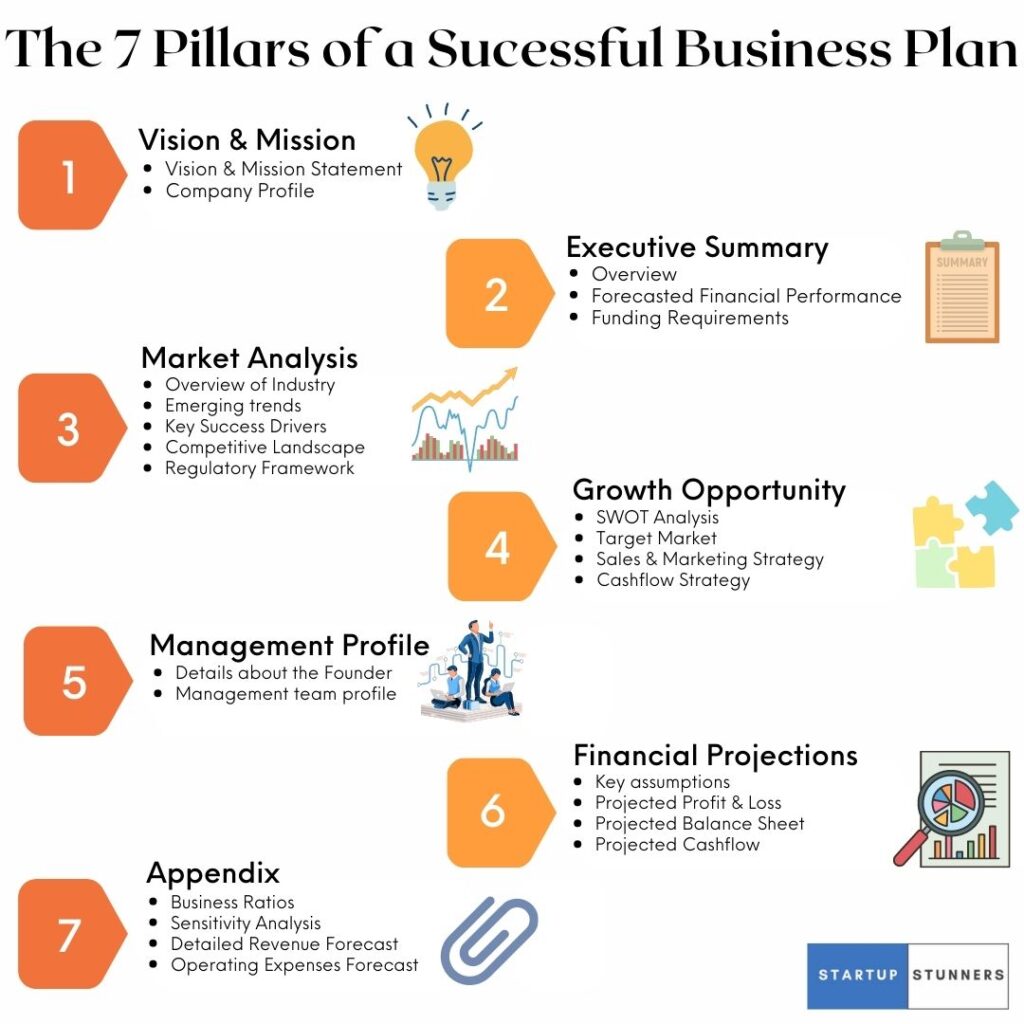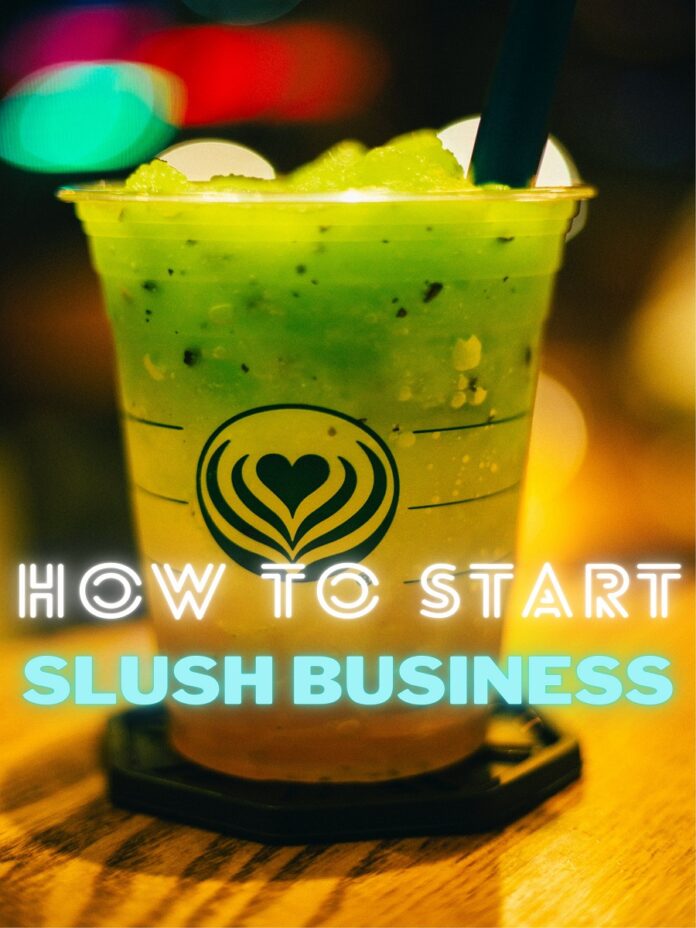Starting a slush business can be a profitable and rewarding endeavor. With the growing popularity of frozen drinks and the relatively low startup costs, it’s no surprise that the slush industry is attracting an increasing number of entrepreneurs. However, starting a slush business is more complicated than simply purchasing a machine and opening your doors. There are numerous factors to consider and steps to take to ensure the success of your business. This blog post will walk you through the steps of starting a slush business, from equipment selection to marketing and promotion. You can run a successful slush business if you understand the importance of slush businesses in today’s market and follow the steps outlined in this post.
Benefits of Slush Business
Starting a slush business has numerous advantages, one of which is high profit margins. The markup on slush drinks is substantial, and with the right pricing strategy, your company can see a significant return on investment. Furthermore, compared to other types of food and beverage businesses, the startup costs for a slush business are relatively low. The equipment needed to make and dispense slush drinks is relatively inexpensive, as are the ingredients used to make the slushies.
Another advantage of a slush business is that it is simple to run. The equipment is easy to use, and the process of making slush drinks is simple. Furthermore, once the business is established, it requires very little labour to keep it running smoothly. A slush business can be a great investment with a high return with the right business plan and management.
How to start a Slush Business – Step by Step Guide
Quick Facts
| Industry trend | Growing |
| Investment range | $5,000 – $20,000 |
| Revenue potential/annual | $50,000 – $100,000 |
| Commitment | Full-time / Part-time |
| Time to build | 3-6 months |
| Profit potential | $20,000 – $50,000 |
Step 1: Conduct Industry Research
The food and beverage industry includes the slushy and frozen drink industry. It is a growing industry, driven by rising demand for refreshing, cold beverages, especially during the summer months. Traditional slushies, frozen cocktails, and smoothies are among the products available in the slushy industry. The global slush machine market is expected to reach USD 420.4 million by 2028, growing at a CAGR of 3.7% between 2023 and 2028.
Small-scale operations, such as food trucks and street vendors, to large-scale operations, such as convenience stores and gas stations, are all part of the industry. There are also a variety of players in the industry, ranging from small, independent operators to large, multinational corporations.
Consumer demand for convenience and refreshment drives the industry. Frozen drinks, particularly slushies, are popular among people of all ages and are perceived as a low-cost treat. Technological advancements have also fueled the industry, making it possible to produce slushies on a large scale and at a lower cost.
In recent years, the slush business industry in the United States has grown significantly. Slush drinks have grown in popularity due to their refreshing taste, versatility, and low cost. Starting a slush business has become a popular choice for entrepreneurs and small business owners due to its low startup cost and high profit margins.
The slush business industry is also extremely competitive, with a large number of market participants, including local and national chain establishments. To differentiate yourself, have a unique selling point, such as a wider variety of flavors or a more eco-friendly production process.
Step 2: Create a Business Plan
A business plan is an essential tool for any business, including a slush business. A business plan is a detailed document that outlines a company’s goals, strategies, and projected financials. It serves as a business roadmap and is an important tool for securing funding and partnerships.

Startup Stunners has been providing high-quality business plan writing services for years, and we’re ready to assist you in developing a comprehensive, effective plan that will propel your company forward. Our team of experts is committed to assisting you in achieving your business objectives and obtaining funding from banks, grants, or other sources. We’re here to help you succeed whether you’re a beginner, entrepreneur, or small business owner. Don’t put it off any longer; visit startupstunners.com/contact-us/ today and let us lead you to success!
Step 3: Investing
Startup costs:
It can vary depending on the size and scale of the operation. The following are some of the major startup costs to consider:
• Equipment: The equipment is the most expensive part of starting a slush business. The cost of the equipment is determined by the type of machine selected and the number of machines required. Depending on the model and brand, a commercial slush machine can cost anywhere from $3,000 to $10,000 or more.
• Ingredients: The cost of ingredients will be determined by the type of slushies you intend to make as well as the size of your operation. Depending on the size of your operation, the cost of ingredients can range from a few hundred dollars to several thousand dollars.
• Rent or lease: Depending on the location of your slush business, you may be required to pay rent or lease on the space.
• Insurance: Insurance is necessary to protect your company from potential liabilities.
• Marketing and advertising: To promote your business to potential customers, you’ll need to budget for marketing and advertising expenses.
• Legal and professional fees: Depending on the structure of your business and its location, you may be required to pay for legal and professional services.
Recurring Expenses:
Once your slush business is up and running, you will have ongoing expenses to budget for, such as:
• Ingredients: Because you’ll need to restock your supplies on a regular basis, the cost of ingredients will be an ongoing expense.
• Labor: If you have employees, you’ll need to budget for their wages and benefits.
• Insurance: To protect your business, you’ll need to pay for insurance on an ongoing basis.
• Rent or lease: If you rent or lease a space, you must pay for it on an ongoing basis.
• Maintenance and repairs: Budget for the cost of maintaining and repairing your equipment.
• Marketing and advertising: To attract and retain customers, you’ll need to promote your business on an ongoing basis.
Step 4: Choose the Correct Machine
An overview of the various types of slush machines on the market.
1. Countertop Slush Machines: The most basic and least expensive type of slush machine. They’re intended for small-scale businesses like convenience stores, cafes, and food trucks. They usually have a smaller capacity and are simple to use.
2. Floor-standing Slush Machines: These are the most common type of slush machine and can be found in a variety of locations, including convenience stores, gas stations, amusement parks, and movie theatres. They have a larger capacity and are more powerful than countertop machines.
3. Frozen Cocktail Machines: These machines are specifically designed for making frozen cocktails like margaritas and daiquiris. They are typically more expensive than slush machines, but they provide a wider variety of frozen drink options.
4. Soft Serve Slush Machines: This type of machine combines a slush machine and a soft serve ice cream machine. They are usually more expensive, but they have a wider selection of frozen drinks and desserts.
5. Refurbished Slush Machines: These are used slush machines that have been reconditioned and updated to function as if they were brand new. They are an affordable option for those looking for a slush machine at a low cost.
Sonic Slush Machine: These slush machines are specifically designed to produce slushies similar to those sold at Sonic drive-in restaurants. They are frequently more expensive than other types of slush machines, but they produce slushies with the consistency and flavor of those sold at Sonic.
7. Wilch Slush Machine: Wilch slush machines are designed and manufactured by Wilch enterprises, a leading slush machine provider. These machines are well-known for their high quality, durability, and ease of upkeep. They are available in a variety of models that are appropriate for various types of businesses.
Step 5: Select the Best Slush Machine
When looking for the best slush machines, keep in mind the size and scope of your operation, as well as your budget and the types of slushies you intend to make.
The Sonic slush machine is a popular choice for those who want to replicate the consistency and flavor of slushies sold at Sonic drive-in restaurants. These machines are well-known for producing high-quality slushies that taste and feel similar to those sold at Sonic. These machines, however, can be more expensive than other types of slush machines.
The Wilch slush machine is another excellent option. Wilch is a leading slush machine manufacturer known for its high quality, durability, and ease of maintenance. They are available in a variety of models that are appropriate for various types of businesses. They are also known for being dependable and simple to use.
Countertop slush machines are another option to consider; they are the most basic and affordable type of slush machine. They’re intended for small-scale businesses like convenience stores, cafes, and food trucks. They usually have a smaller capacity and are simple to use.
Step 6: Factors to Consider When Buying a Refurbished Machine
There are a few things to consider when purchasing a refurbished or used slush machine. First and foremost, ensure that the machine has been properly reconditioned and updated to function as new. This may include inspecting for wear and tear as well as ensuring that all mechanical and electrical components are in good working order. It is also critical to inquire about the machine’s service history in order to determine how well it has been maintained.
Another important factor to consider is the cost of the used machine. While refurbished or used slush machines can be a cost-effective option, make sure the price is reasonable and in line with the current market value. It is also critical to consider the costs of any additional repairs or updates that may be required.
It is also critical to think about the warranty or guarantee that comes with the used machine. Some refurbished or used machines may have a limited warranty, while others may not have one at all. This is an important consideration when making a final decision.
Finally, it is critical to verify the used machine’s brand and model. Some brands and models may be more dependable and durable than others, so do your research and select a reputable brand with positive customer reviews.
Step 7: Everything is mixed up Slushy – A Good Choice
An “all mixed up slushy” is a type of slushy made by combining several different flavors. This type of slushy has a unique selling point in that it allows customers to create their own custom flavor combinations, resulting in a unique and personalized experience. The mixed-up slushy concept can help boost customer satisfaction and, as a result, sales.
To make the perfect all mixed up slushy recipe, start with high-quality ingredients. This includes the use of real fruit purees, premium syrups, and other flavorful ingredients. It’s also important to think about flavor balance and how different ingredients will complement one another. Experimenting with different flavor combinations is essential for creating a one-of-a-kind and delectable all-mixed-up slushy recipe.
When developing a recipe for all mixed up slushy, keep the ingredient ratio in mind. A good rule of thumb is to use a 1:1 syrup-to-ice ratio. To improve the flavor, a small amount of flavor extract can be added. You can also add some toppings to make it more appealing and add texture.
To make a perfect all mixed up slushy, pay attention to the consistency of the slushy; it should be smooth and not too thick or thin. The slushy should also have a nice flavor balance, with neither being too sweet nor too sour. It’s also important to consider the slushy’s visual appeal; using colorful fruits and toppings can make it more appealing.
Step 8: Marketing & Promotion
Marketing and promotion are essential for the success of any business, including slush. In a crowded market, it is critical to stand out and attract customers. Social media and local advertising are two methods for promoting a slush business.
Social media is an extremely effective tool for promoting any business. Social media platforms such as Facebook, Instagram, and Twitter can be used to connect with potential customers and promote your company. You can upload photos of your slushies, post special deals and promotions, and interact with customers. You can also use Instagram stories, IGTV, and Instagram Reels to create a unique and entertaining visual representation of your business.
Local advertising is another way to promote your slush business. Local newspaper ads, flyers, and billboards can help raise brand awareness and attract customers. Customers who bring in a flyer or mention a specific ad may also be eligible for discounts or special promotions.
It is also critical to distinguish yourself in a crowded market by providing unique and high-quality products. Real fruit purees, high-quality syrups, and other flavorful ingredients are examples of this. Offering a variety of flavors, as well as experimenting with new and unique flavors, can help to attract customers. Creating a visually appealing and fun environment in your store can also help to attract customers and create a memorable experience.
You can also create a loyalty program and offer discounts or rewards to repeat customers. Hosting events, such as slushy-making competitions, can also be a great way to attract customers while also creating a fun and engaging environment.
To summarize, promoting a slush business necessitates a variety of strategies, including social media, local advertising, and unique and high-quality products.
Step 9: Obtaining Licenses and Permits
Starting a slush business may necessitate the acquisition of licenses and permits from local and state government agencies. The specific requirements will vary depending on the business’s location and type of operation.
The following licenses and permits may be required:
• A business license: A general business license is required for any business that operates within the city or county.
• A food service or vending license: A food service or vending license is required for any business that serves food to customers.
• A health permit: The local health department issues this permit, which certifies that the business meets certain health and sanitation standards.
• A fire safety permit: The local fire department issues this permit, which certifies that the business meets certain fire safety standards.
Additionally, to ensure compliance, check the state and local laws and regulations governing the operation of a food service business.
Conclusion
For entrepreneurs looking for a low-cost, easy-to-run business with high profit margins, starting a slush business can be a great opportunity. The slush market is expanding, and there is a wide range of slush machines available to meet a variety of needs and budgets.
In this blog post, we covered everything from the fundamentals of the industry to the specific machines that are available. We have also covered important topics such as the required investment, licenses and permits, and business marketing and promotion.
To summarize, starting a slush business can be a great opportunity for entrepreneurs looking to start their own business, but it’s critical to do your research and have a thorough business plan in place. A slush business can be a profitable and enjoyable venture with proper planning.
We hope this blog post has been helpful and inspiring to those considering starting their own slush business. We encourage you to take the first step and open your own slush shop right away.
Frequently Asked Questions
How much does it cost to start a slush business?
The cost of starting a slush business varies according to factors such as the size of the operation, the cost of the equipment, and the location of the business. Startup costs can range from a few thousand dollars to tens of thousands of dollars in most cases.
How much can I expect to make in a slush business?
Profit margins for a slush business can be very high, with some companies reporting profit margins of 80% or higher. However, the actual revenue potential will be determined by factors such as the business’s location, the cost of ingredients, and overhead expenses
What type of slush machine is best for my business?
The best slush machine for your company will be determined by factors such as the size of your operation, your budget, and the type of slushies you intend to serve. Slush machines come in a variety of sizes and shapes, including high-volume machines, small countertop machines, and even portable machines.
How do I market my slush business?
Social media, local advertising, word of mouth, and flyers are all effective ways to market your slush business. It is critical to differentiate yourself in a crowded market by offering unique flavors and developing a strong brand identity. Discounts, promotions, and loyalty programs are also effective ways to attract customers.
What licenses and permits do I need to start a slush business?
The specific licenses and permits needed to open a slush business will vary depending on the location and type of operation. A business license, food service or vending license, health permit, and fire safety permit are all common requirements. To ensure compliance with all necessary regulations, it is critical to consult with a local business attorney or the appropriate government agency.






